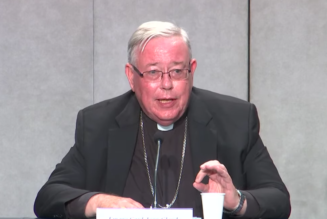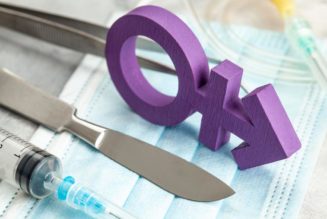
Here’s the grimmest version of life a year from now: More than two million Americans have died from the new coronavirus, almost all mourned without funerals. Countless others have died because hospitals are too overwhelmed to deal adequately with heart attacks, asthma and diabetic crises. The economy has cratered into a depression, for fiscal and monetary policy are ineffective when people fear going out, businesses are closed and tens of millions of people are unemployed. A vaccine still seems far off, immunity among those who have recovered proves fleeting and the coronavirus has joined the seasonal flu as a recurring peril.
Yet here’s an alternative scenario for March 2021: Life largely returned to normal by the late summer of 2020, and the economy has rebounded strongly. The United States used a sharp, short shock in the spring of 2020 to break the cycle of transmission; warm weather then reduced new infections and provided a summer respite for the Northern Hemisphere. By the second wave in the fall, mutations had attenuated the coronavirus, many people were immune and drugs were shown effective in treating it and even in reducing infection. Thousands of Americans died, mostly octogenarians and nonagenarians and some with respiratory conditions, but by February 2021, vaccinations were introduced worldwide and the virus was conquered.
The Best Case
I’ve been speaking to epidemiologists about their best- and worst-case scenarios to gauge what may lie ahead and see how we can tilt the balance. Let me start with the best case, since we could all use a dose of hope — which may even be therapeutic — before presenting a bleaker prognosis.
“The best case is that the virus mutates and actually dies out,” said Dr. Larry Brilliant, an epidemiologist who as a young doctor was part of the fight to eradicate smallpox. Brilliant was a consultant for the movie “Contagion,” in which a virus evolved to become more deadly, but that’s the exception. “Only in movies do viruses seem to become worse,” he explained.
Two other lethal coronaviruses, SARS and MERS, both petered out, and that is possible here. “My hope is that Covid-19 will not survive,” said Dr. Charles G. Prober, a professor at Stanford Medical School.
Several countries have shown that decisive action can turn the tide on Covid-19, at least for a time. China, astonishingly, on Thursday reported not a single new case of domestic transmission. While China is still vulnerable to a second wave, it has apparently shown that the virus can be squelched.
The West isn’t going to copy the coercive tactics of China, but Singapore, Taiwan, South Korea and Hong Kong have also demonstrated that, at least temporarily, the virus can be controlled.
Singapore and the other successful Asian models responded with the standard epidemiological tool kit: vigilance and rapid response, testing, isolating the sick, tracing contacts, quarantining those exposed, ensuring social distancing and providing reliable information. They did not shut down their entire countries, and Singapore managed to keep its schools open throughout.
“Singapore is a best-case scenario,” said Dr. Tom Frieden, a former director of the Centers for Disease Control and Prevention. He said that there was some possibility that with social distancing and limits on gatherings, the United States could knock down the numbers of infections and begin to adopt Singapore-style strategies to reduce new infections.
“The most important lesson is that the virus can be contained if people are responsible and adhere to certain simple principles,” said Dr. Christopher Willis, a physician in Singapore. “Stay calm. For most people it’s like the common cold.”
Dr. Tom Inglesby, an expert on pandemics at the Johns Hopkins Bloomberg School of Public Health, said, “The fact that Singapore, Hong Kong, Taiwan, South Korea and China — and to some extent Japan — have all flattened their curves despite having the initial onslaught of cases should give us some hope that we can sort out what they’re doing well and emulate it.”
One encouraging sign is that in Washington State, which had an early outbreak, the number of positive tests appears stable.
The weather may also help us. Some respiratory viruses decline in summer from a combination of higher temperatures and people not being huddled together, so it is possible that Northern Hemisphere nations will enjoy a summer break before a second wave in the fall. That’s what happened during the 1918 Spanish flu pandemic: It hit in the spring of 1918, went away but returned worse than ever in the fall.
Of the four coronaviruses that cause the common cold, two diminish in warm weather, while two are more variable. SARS and MERS did not have clear seasonal variations, and even seasonal flu is transmitted in the summer, although less than in winter. So while experts hope that hot weather will shortly bring a reprieve from the coronavirus — the flu is already on the retreat — there’s no solid evidence.
One reason for measured optimism is the prospect that antiviral medicines will beat the coronavirus; some are already in clinical trials. Scientists have hopes for remdesivir, originally developed for Ebola; chloroquine, an old anti-malaria drug; and some anti-H.I.V. and immune-boosting drugs. Many other drugs are also lined up for trials.
Even without proven treatment, the coronavirus may be less lethal than was originally feared, so long as health care systems are not overwhelmed. In South Korea and in China outside Hubei Province, about 0.8 percent of those known to be infected died, and the rate was 0.6 percent on a cruise ship.
That’s still roughly six times the rate of seasonal flu, about 0.1 percent, but Dr. John Ioannidis of Stanford University argues that the fatality rate may end up even lower. He warns that we are engaging in hugely disruptive interventions without firm evidence of the threat that the virus poses. Singapore has had more than 200 confirmed cases of the virus and not a single death.
About four out of five people known to have had the virus had only mild symptoms, and even among those older than 90 in Italy, 78 percent survived. Two-thirds of those who died in Italy had pre-existing medical conditions and were also elderly; Dr. David L. Katz, the former director of the Prevention Research Center at Yale University, notes that many might have died soon of other causes even if the coronavirus had not struck.
That said, a new C.D.C. study finds that of coronavirus cases in the United States requiring admission to the intensive care unit, nearly half involved patients under age 65; there is also concern about lasting lung damage among survivors.
Putting it all together, Dr. Tara C. Smith, an epidemiologist at Kent State University, said: “I’m not pessimistic. I think this can work.” She thinks it will take eight weeks of social distancing to have a chance to slow the virus, and success will depend on people changing behaviors and on hospitals not being overrun. “If warm weather helps, if we can get these drugs, if we can get companies to produce more ventilators, we have a window to tamp this down,” Smith said.
So that’s the best case, and it’s plausible. If you want to feel upbeat, stop reading here.
The Worst Case
Now we get to the other end of the range of possibilities. Dr. Neil M. Ferguson, a British epidemiologist who is regarded as one of the best disease modelers in the world, produced a sophisticated model with a worst case of 2.2 million deaths in the United States.
I asked Ferguson for his best case. “About 1.1 million deaths,” he said.
When that’s a best-case scenario, it’s difficult to feel optimistic.
Ferguson questions whether South Korea and other countries can sustain their success for 18 months until a vaccine is ready, even as new cases are constantly being imported. Indeed, a burst of new cases has been reported in recent days in Singapore, Hong Kong and Taiwan.
As for the hope that the United States can emulate Singapore or South Korea, that may be a leap.
America and South Korea reported their first Covid-19 cases on the same day, but South Korea took the epidemic seriously, promptly created an effective test, used it widely and has seen cases go down more than 90 percent from the peak. In contrast, the United States badly bungled testing, and President Trump repeatedly dismissed the coronavirus, saying it was “totally under control” and “will disappear,” and insisting he wasn’t “concerned at all.” The United States has still done only a bit more than 10 percent as many tests per capita as Canada, Austria and Denmark.
By some counts, the United States is just eight days behind Italy on a similar trajectory, and it’s difficult to see how America can pirouette from the path of Italy to that of South Korea. The United States may already have 100,000 infected citizens — nobody knows. That’s too many to trace. Indeed, one can argue that the U.S. is not only on the same path as Italy but is also less prepared, for America has fewer doctors and hospital beds per capita than Italy does — and a shorter life expectancy even in the best of times.
Mitre, a nonprofit that does work on health care, calculated that coronavirus cases are doubling more quickly in the United States than in any other country it examined, including Italy and Iran.
The nightmare is a surge that overwhelms the hospital system. A Times colleague, Stuart A. Thompson, and I worked with two epidemiologists to develop an interactive model of the virus that suggested that up to 366,000 I.C.U. beds might be needed in the United States for coronavirus patients at one time, more than 10 times the number available. A Harvard study reached a similar conclusion.
This is an interval of quiet when the United States should be urgently ramping up investment in vaccines and therapies, addressing the severe shortages of medical supplies and equipment, and giving retired physicians and military medics legal authority to practice in a crisis. During World War II, the Ford Motor Company turned out one B-24 bomber every 63 minutes; today, we should be rushing out ventilators and face masks, but there’s nothing like the same sense of urgency.
Peter Hotez, an eminent vaccine scientist at Baylor College of Medicine, told me that he and his colleagues have a candidate vaccine for the coronavirus but still haven’t been able to line up sufficient funding for clinical trials.
Already there are stunning unmet needs for personal protective equipment. After initial missteps in Wuhan, where the coronavirus was first discovered, China adopted protocols for protective gear that are more rigorous than those in the United States, involving N95 masks and face shields, double gowns, gloves and shoe covers, plus special areas to remove protective clothing — and all this worked. Not one of the 42,000 health workers sent to Wuhan is known to have become infected with the coronavirus. The United States isn’t protecting health workers with the same determination; it seems to be betraying them.
Dr. Irwin Redlener, director of the National Center for Disaster Preparedness at Columbia University, said he had received a phone call from a major Florida hospital that had run out of masks. A doctor wanted to know: Could cloth be used to construct makeshift masks?
The answer: not very well, but it’s better than nothing. The need is so acute that the C.D.C. has posted official guidance advising that doctors and nurses “might use homemade masks (e.g., bandanna, scarf) for care of patients with Covid-19 as a last resort.”
“If people think that a hospital crisis is coming, it’s important to know that it’s already here,” Redlener said. “It’s affecting front-line health workers, who are probably the highest risk group. These are like combat troops on the front lines of a war.”
In Italy, 8.3 percent of coronavirus cases involve health workers. A doctor in the Seattle area who is forced to reuse N95 masks told me that she and her colleagues fear that the lack of supplies will be deadly.
“We are all making dying contingency plans at this point just in case,” she said. “Wills, backup people to take care of kids, recording bedtime stories.”
In the worst-case scenario, will social services collapse in some areas? Will order fray? Gun sales are increasing, because some people expect chaos and crime.
The United States is in a weaker position than some other countries to confront the virus because it is the only advanced country that doesn’t have universal health coverage, and the only one that does not guarantee paid sick leave. With chronic diseases, the burden of these gaps is felt primarily by the poor; with infectious diseases, the burden will be shared by all Americans.
It’s Up to Us
So where is the United States headed? Will we endure the worst case, with 2.2 million deaths? Or will we manage to turn things around, with help from summer?
No one knows, so the optimal path forward is to hope for the best while preparing for the worst. Dr. Brilliant, whom I quoted above as hoping that the virus mutates and dies out, also warns that the coronavirus may “cause global disruption on a scale we have not seen from any epidemic in more than 100 years.”
Outcomes depend in part on us — and my conversations with experts leave me concerned that we still are not doing enough.
“If anything, we’re still underreacting,” said Dr. Chaz Langelier, an expert on respiratory infections at the University of California at San Francisco. “In the last week, in terms of public health response and testing, we’ve maybe gotten to the pace we should have been at a month ago.”
This crisis should be a wake-up call to address long-term vulnerabilities. That means providing universal health coverage and paid sick leave — and if you think that the coronavirus legislation Trump signed on Wednesday achieves that, think again. It guarantees sick leave to only about one-fifth of private-sector workers. It’s a symbol of the inadequacy of America’s preparedness.
More broadly, the United States must remedy its health priorities: We pour resources into clinical medicine but neglect public health. What’s the difference? If you get lung cancer, surgeons operate to save your life, but public health professionals keep you from smoking in the first place. If you get the coronavirus, a doctor will treat you; public health aims to keep the pandemic from getting near you. The United States has a decentralized and spotty public health system, and it has endured painful budget cuts, yet historically public health has saved more lives than clinical medicine.
We may dodge a bullet this time, but experts have been warning for decades that a killer pandemic will come; typically, they expected an avian flu like the 1918 pandemic rather than a coronavirus. Singapore and South Korea did well this time partly because they had been frightened by SARS and MERS and were vigilant; if we, too, can be scared enough to invest in public health and fix our health care system, then something good can come from this crisis — and in the long run, that may save lives.
The Big One is approaching, whether now or later, whether we’re prepared or not. Dr. Ferguson, the infectious disease modeler who predicted deaths in the United States might reach 2.2 million, came down with a cough and fever a few days ago. He tested positive for the coronavirus.
The post The Best-Case Outcome for the Coronavirus, and the Worst appeared first on New York Times.







